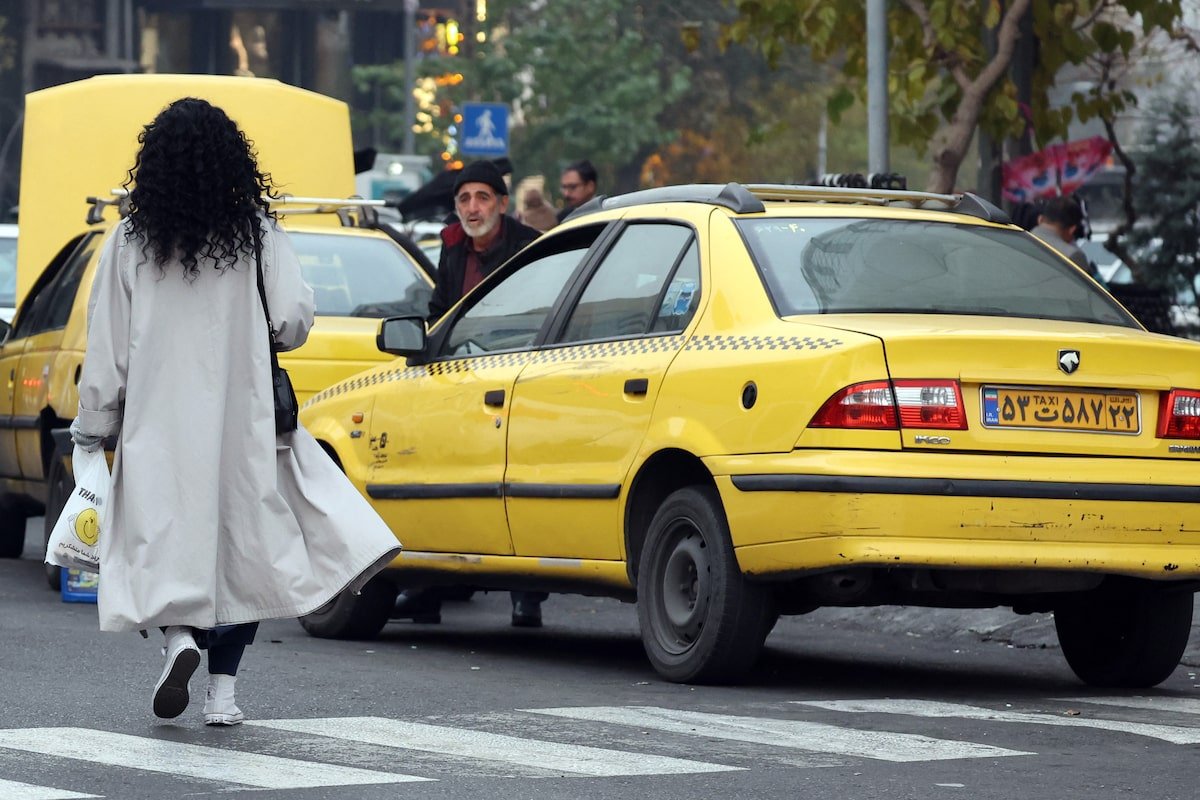
An Iranian woman walks along a street in the capital Tehran on Dec. 12.-/AFP/Getty Images
Iran is opening psychological treatment clinics for women who defy the regime’s mandatory hijab law, a move decried by human rights advocates as a way of institutionalizing and silencing women for their political views.
Mehri Talebi Darestani, the head of the Tehran Headquarters for the Promotion of Virtue and Prevention of Vice, announced the initiative in November, claiming the clinics would offer “scientific and psychological treatment for hijab removal.”
The decision has drawn strong criticism from human rights advocates and Iranian women worldwide, who say it is the latest attempt to quash dissent in the Islamic republic. It is believed to have been triggered by Ahoo Daryaei, an Iranian student and mother of two, who took off her hijab and stripped down to her underwear on the steps of a Tehran university in November in protest of the country’s hijab law. A video that went viral on social media showed Ms. Daryaei being forcibly detained by plainclothes security police.
Ms. Daryaei was held at a psychiatric facility before being released. A spokesperson for the university said she was under severe mental pressure and had a mental disorder.
Marina Nemat, who was arrested in Iran in 1982 at 16 years old for her political views and came close to execution in Evin prison, said the regime is grandstanding with the clinics.
“They’re putting on a show as if to say to the world, ‘Look, our country is free, but these women who strip down to their underwear in public are obviously unstable,’” she said from Canada, where she was eventually able to escape to. “They’re putting on a show for their own people, saying, ‘Don’t worry, we’ll take care of them: we’ll send them to a mental hospital or clinic to help them get better.’”
Under Iranian law, it is mandatory for women and girls aged 9 and older to wear a hijab and those who don’t can be jailed for 10 to 60 days. But according to Hossein Raeesi, an Iranian-Canadian human rights lawyer and professor of law and legal studies at Carleton University, there is no punishment in sharia law, nor in the Quran, for not wearing the hijab and therefore the clinics are not aligned with Islamic law.
“The Islamic regime is abusing the principles of the rule of law,” he said. Breaking the hijab law is considered a low crime, not serious. “As such there is no program for sending women and girls to clinics. Traffic crimes like running a red light are also low crimes. Are people who violate traffic laws sent to psychological clinics? Not at all.”
While Iran has not said when the clinics would launch or how many there would be, Mr. Raeesi said a few had opened by mid-December.
Meanwhile, a new hijab and chastity law that would enforce stricter dress codes and impose harsher penalties was set to take effect last month but was paused amid significant backlash. That law would make it illegal for women and girls to expose their hair, forearms or lower legs in public or online. Punishment could include steep fines, travel bans, lengthy prison sentences – or even execution.
The law would also target businesses and organizations, holding them accountable for enforcing these rules with threats of fines and closure for non-compliance. Iranian President Massoud Pezeshkian has called for the legislation to be reformed and United Nations experts have demanded for it to be repealed.
“It’s an intensified crackdown on personal freedoms and activism against the hijab mandate,” Mr. Raeesi said. “The focus on women’s clothing demonstrates a systematic effort to control women more stringently. It creates an unequal society where women’s dress becomes a litmus test for morality and compliance, reinforcing gender-based oppression.”
But the government seems to be aware that if women who defy the dress code are sent to prison it will only encourage other women and girls – particularly those attending school and university – to be allied with them, Mr. Raeesi said.
“They are afraid of a second hijab movement by the masses,” he said.
In September, 2022, mass protests broke out in Iran and around the world after 22-year-old Mahsa Amini died while in police custody for allegedly wearing her hijab incorrectly. Known as Women, Life, Freedom, the movement aims to end compulsory hijab laws as well as other forms of discrimination and oppression against women in Iran. Hundreds of protesters have been killed by Iranian authorities, while thousands have been arrested.
Mr. Raeesi believes the opening of the clinics indicates the regime has failed in its attempts to control the bodies of women, but he doesn’t see the move working out long-term.
“Inside of the country, professors and even some Muslim scholars are strongly against them,” he said. Logistically, the clinics don’t make a lot of sense: Iran has a population of 90 million people, half of whom are women. “How many would they need across the country? Thousands.”
Both Ms. Nemat and Mr. Raeesi believe the regime is creating the very conditions it is claiming to correct. Behind closed doors it can do pretty much anything, said Ms. Nemat, speaking from her own experience.
“There is no oversight. They can drug people to oblivion. People who did not have psychological problems will suddenly have psychological problems. This ‘justifies’ their actions. It’s what they did in Evin prison, too,” she said.
Even so, Iranian women don’t seem to be worried about what the clinics might mean for them. Nothing much is changing on the streets of Iran, Mr. Raeesi said: “Women are still walking around without wearing hijabs.”
He mentioned an Iranian woman he recently spoke to who said that when they joined the Woman, Life, Freedom movement they had decided they would pay a price.
“They are committed to fighting for their rights until they achieve them.”
